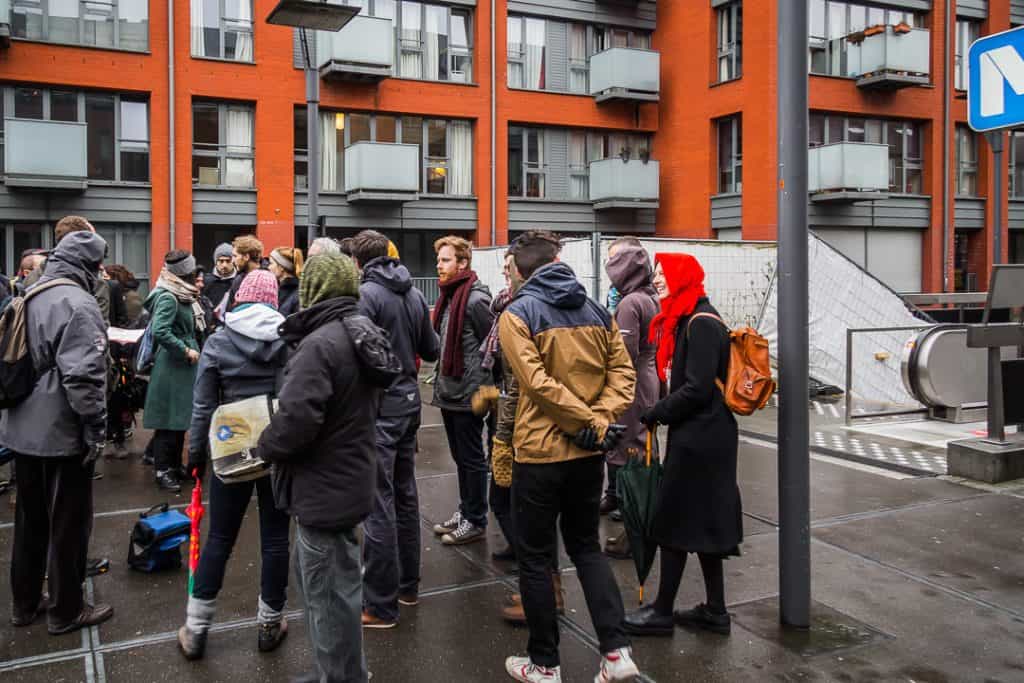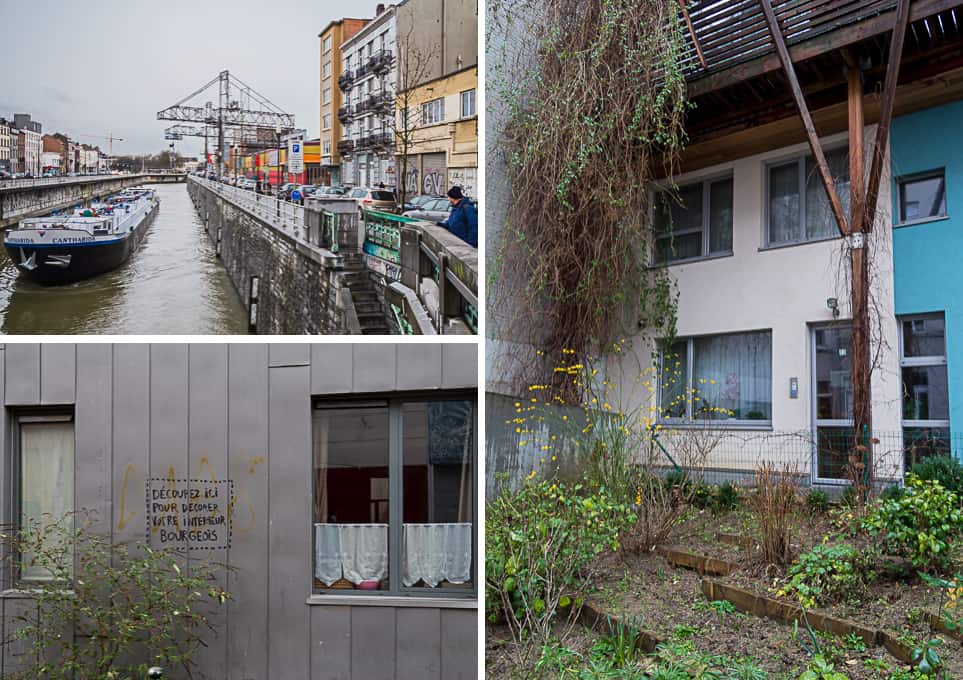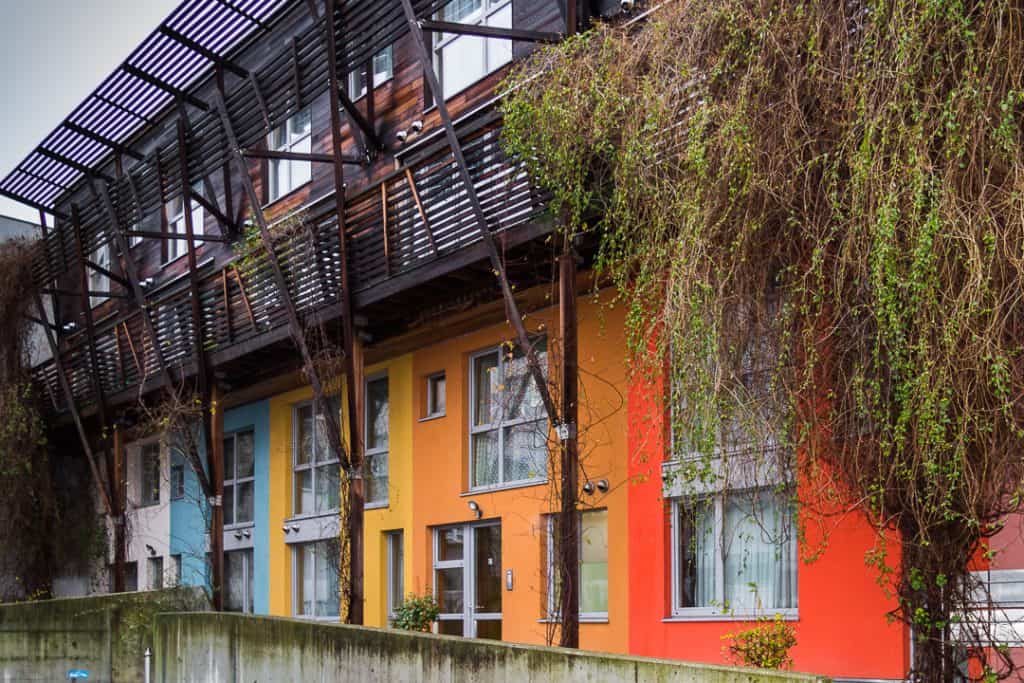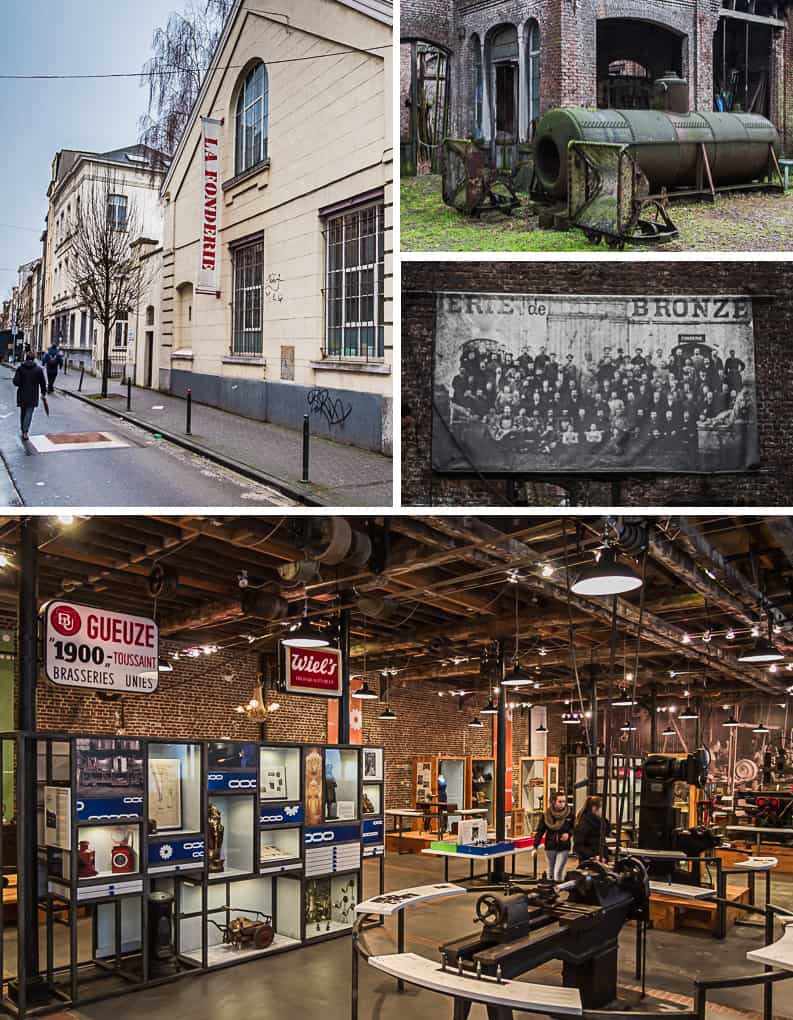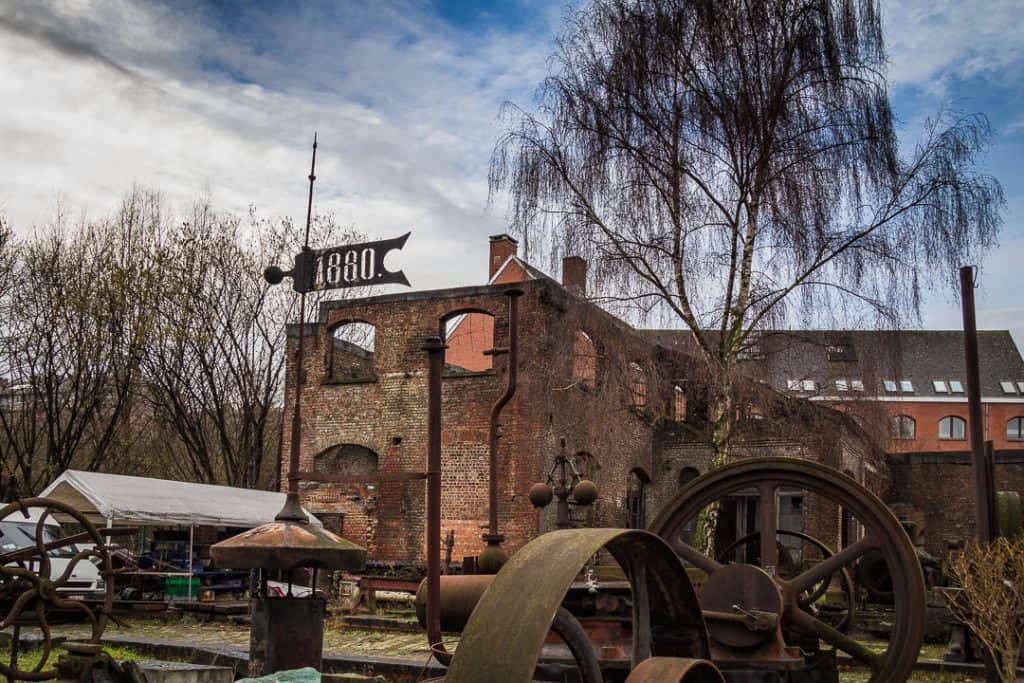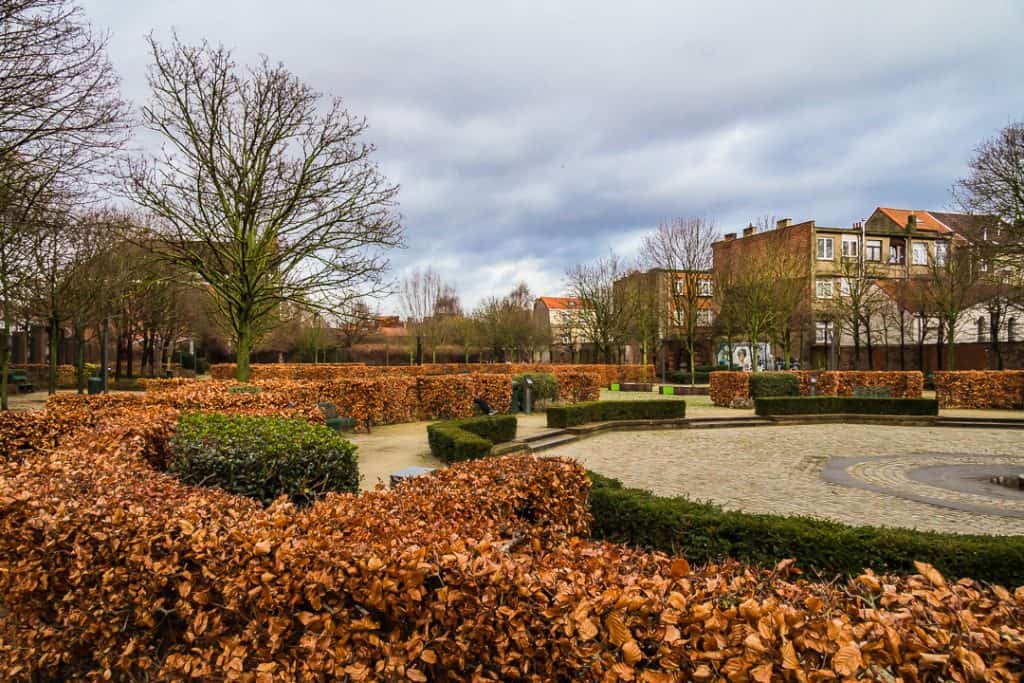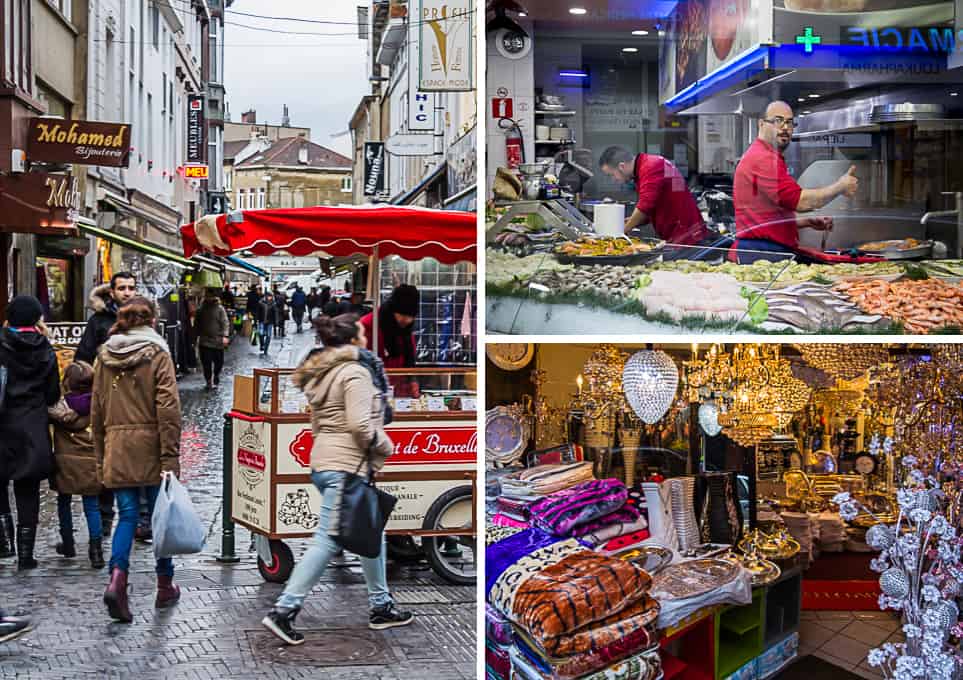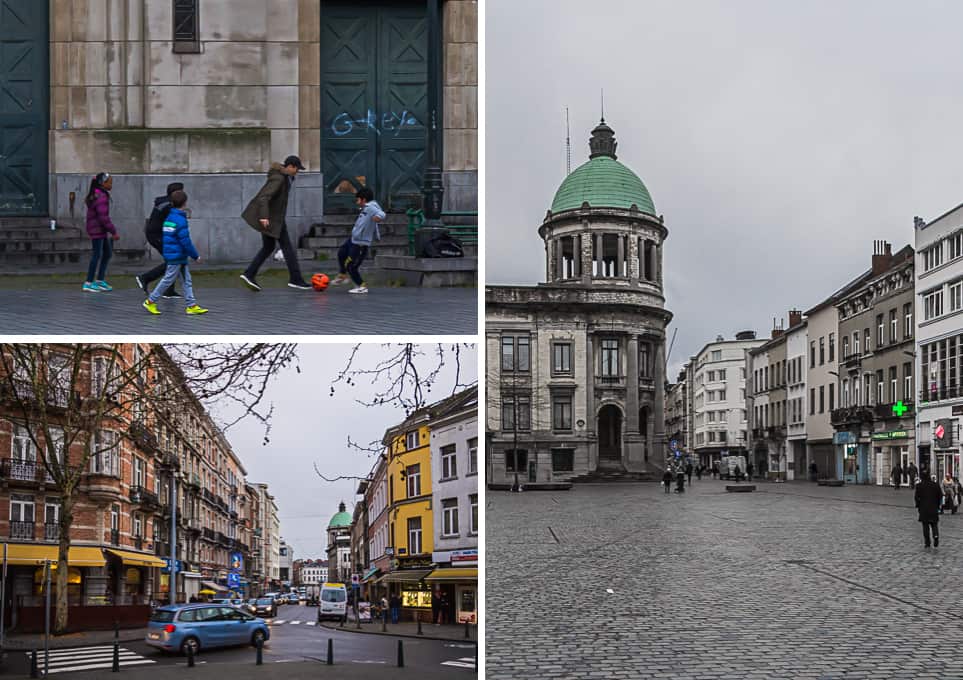Molenbeek is famous these days!
Be it not for travelling but as Europe’s jihadi central located in that hellhole called Brussels!
While I can’t deny that some of the Jihadists from the recent Paris attacks were undeniably linked to Molenbeek, saying that Molenbeek is a dangerous place and a no-go area might be a bit exaggerated.
Seeing I worked in Molenbeek for more than 10 years and I know the area quite well, I decided it would be a good thing to show you a different side of Molenbeek.
So last week I joined Brukselbinnenstebuiten who wants to put the debate back on track with an exploration in the areas between the Canal, the Ninoofsesteenweg and the Leopold II-laan, adding a multi-colored layer to the one-sided view of Molenbeek.
We started our “IS thIS Molenbeek” walking tour outside metro station Graaf van Vlaanderen (Comte de Flandre), near the escalator at the side of the canal.
The Industrialisation of Brussels
The full history of Brussels and Molenbeek wasn’t really known to me, and it was very interesting to learn about how at the end of the 18th century, the Industrial Revolution and the building of the Brussels-Charleroi Canal brought prosperity to Molenbeek through commerce and manufacturing.
Belgium was the second industrialized country after Britain, with the first railroad on the European continent that ran between Molenbeek (Brussels) and Mechelen! At one point they had more steam machines in Molenbeek then in the rest of Europe combined! Molenbeek contained mainly industrial buildings while Brussel had more residential areas which is still visible if you look at the buildings surrounding the Canal on both sides.
Attracted by the industrial opportunities, many workers moved in, first from other Belgian provinces and France, then from Southern Europe, and more recently from Eastern Europe and Africa.
However, the industrial decline, partial gentrification and the ensuing poverty left its mark on the current urban landscape and scarred the social life of the community, leading to rising crime rates and pervading cultural intolerance. Various local revitalization programs are currently under way, aiming at relieving the most impoverished districts of the municipality.
One of those projects is L’espoir (Hope), an ecological and collective housing project. The structure of the building is 100% wood and wood products and is constructed according to the Passivhaus standard.
La Fonderie
The history of the city’s industrial past and the industrialization of Brussels is illustrated in La Fonderie, Brussels Museum of Industry and Labour (27 Rue Ransfort, Brussels 1080 , Belgium)
The museum presents four key industry sectors that have created or transformed products made in Brussels: the metal industry, woodworking, textile manufacturing and food processing. The museum is located on the site of a famous foundry that casted many famous statues and is well worth a couple of hours of your time. Especially if you like history. The ruins also make for a wonderful location:
After our visit to La Fonderie we wandered through the main shopping street in Molenbeek.
While there are still a lot of “traditional” shops from first generation immigrants, the second generation is taking over from their parents and are modernizing shops with modern designs and style.
We ended our walking tour at the Sint-Jan-Baptistvoorplein (Parvis Saint-Jean-Baptiste) with a delicious mint tea in one of the local cafés.
I really enjoyed this walk! I learned a lot about the industrialisation of Brussels, how the old industrial glory faded away and how Molenbeek has turned into a part of the city where migration is responsible for the dynamics and how a new generation is building a future.
I hope you also enjoyed this post and that you are left with a different view on Molenbeek!
